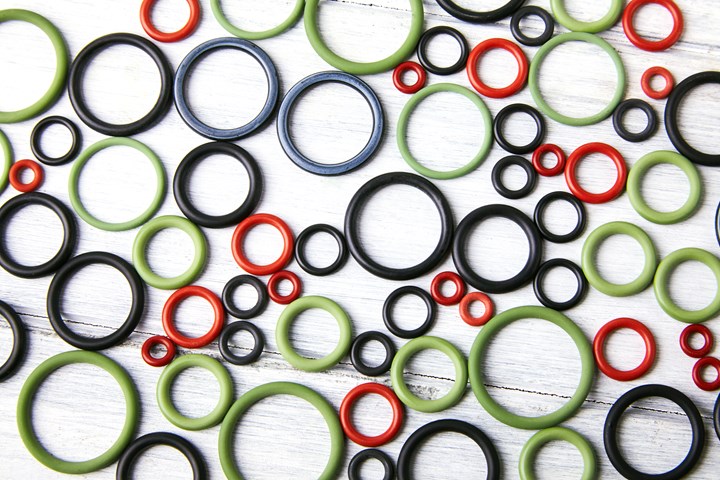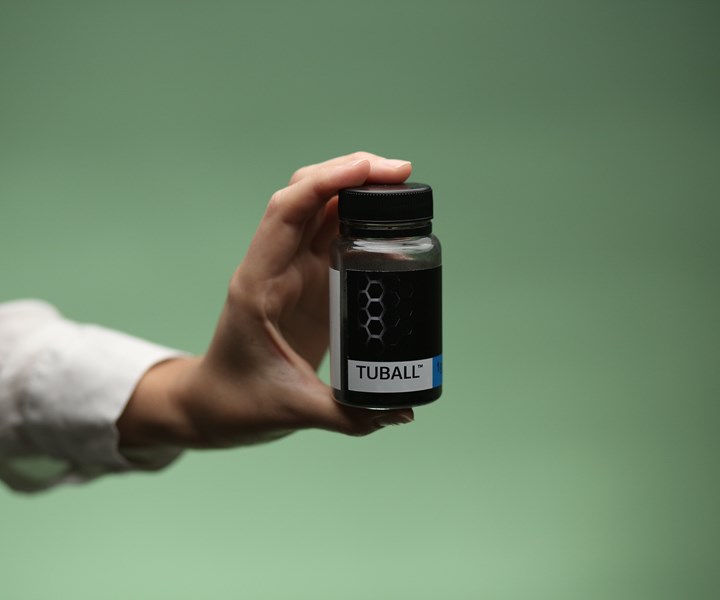Additives: Graphene Nanotubes in Fluoroelastomers Benefit Oil & Gas and Automotive Sectors
OCSiAl’s graphene nanotubes for fluoroelastomers (FKM) shown to perform optimally in components such as seals, O-rings, gaskets and hoses.
Earlier this year, we reported that Luxemburg’s OCSiAl (U.S. office is in Columbus, Ohio) had begun offering Tuball Matrix graphene nanotube additives specifically developed for high-performance fluoroelastomers (FKM) for applications in oil & gas and automotive sectors. A family of fluoroelastomer materials, FKM is defined by the ASTM International standard D1418. While fluoroelastomers are more expensive that neoprene or nitrile rubber elastomers, they provide additional thermal and chemical resistance.Tubal Matrix is a naturally conductive single-wall carbon nanotube additive that improves the physical properties of various elastomers as well as conductivity without compromising other attributes.

Small, but critical, components such as seals, O-rings, gaskets, and hoses are exposed to the harshest environments in oil & gas operations or as parts of vehicle engines. Fluoroelastomers are often the top choice for these tiny rubber parts due to the requirement to resist synthetic oils, corrosive fumes, chemicals, ultra-high temperatures and pressure. Depending on the final application requirements, conductive compounds based on carbon black or reinforced formulations based on silica are two types of widely used FKM formulations for the most vital sectors.
OCSiAl’s new technology based on Tuball graphene nanotubes has been shown to enhance all mechanical prodperties including prolonged durability, and also provide electrical conductivity to FKM. For example, in a carbon black-based FKM formulation, it has been proven that introducing as low as 3% of graphene nanotube concentrate can neutralize carbon black’s negative impacts on flexibility and elasticity, while also resulting in hardening and a reduced life cycle for the final products. Nanotubes make it possible to achieve electrical resistivity of 5 Ohm*cm, and at the same time to improve tensile and tear parameters by 30–40% without a reduction in elasticity, according to data after heat and fuel C aging.

In silica-based FKM, the addition of graphene nanotubes results in increased resistance to synthetic fuels and heat, improved tensile strength and M100 (or modulus 100) by up to 30%, increased abrasion resistance by up to 20%, and enhanced tear strength by up to 90%. Moreover, tests have proven that these improvements to mechanical properties are maintained throughout extensive heating. Additionally, graphene nanotube-enhanced, silica-based FKMs offer electrical conductivity below 10 Ohm*cm.
According to OCSiAl, these high-value advancements can also be realized in some other specific applications, such as in production areas with automated systems and sensors where color and electrostatics are required for identification of parts by robots. The unique properties offered by graphene nanotubes give more freedom to FKM compounders to upgrade rubber formulations by reducing filler content and improving polymer stability in austere environments, which results in economic benefits to a number of key industries.
Related Content
-
PEEK for Monolayer E-Motor Magnet Wire Insulation
Solvay’s KetaSpire KT-857 PEEK extrusion compound eliminates adhesion and sustainability constraints of conventional PEEK or enamel insulation processes.
-
Carbon Fiber Reinforced Nylon 12 for Injection Molding
CRP Technology’s new composite is 100% recycled from Windform XT 2.0 IMG industrial 3D printing material.
-
Injection Molded Tape and Resin “Sandwich” Technology Debuts
During its Mobility Days in Austria, Engel and KTM Technologies debuted an all-plastic molded motorcycle seat base produced via a tape-sandwich process that can run in a standard molding process.









